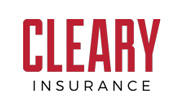2014 Changes affecting Federal Contractors
There have been significant developments in the labor policy arena during the first quarter of 2014. In January, President Obama unveiled his plan to use an Executive Order to increase the minimum wage Federal Contractors pay their workers. In March, a Presidential Memorandum was issued to the Department of Labor (DOL) to update and modernize the overtime pay system. Additionally, the Final Rule of Section 503 of the Rehabilitation Act of 1973 which was amended in September 2013 will go into effect on March 24, 2014. Federal Contractors need to be aware of these changes and the potential impact they have on DOL compliance.
Minimum Wage Increase/Overtime Protection
On February 12, 2014, President Obama issued an Executive Order to raise the minimum wage for Federal Contractors. As of January 1, 2015, the minimum wage for affected federal contracting and subcontracting personnel will increase from $7.25 per hour to $10.10 per hour. Additionally, the Obama administration announced it will issue a Presidential Memorandum to the DOL instructing its Secretary to update regulations regarding overtime protection for workers under Federal Labor Standards Act (FLSA). Any changes to the regulation will be the first since 2004, when the minimum weekly salary for overtime-exempt workers was increased to the current $455 per week.
Rehabilitation Act
On March 24, 2014 two final rules issued by the Federal Contracts Compliance Programs will go into effect, enhancing contractor’s hiring and affirmative action obligations for individuals with disabilities and covered veterans. The disability rule sets a seven percent goal for contractors’ employment of persons with disabilities across all job categories and introduces numerous compliance and reporting mandates. If you would like more information on these rules please click here to read a fact sheet outlining the background and highlighting the regulations.
Given these diverse and often disparate developments, the importance of the Professional Service Council (PSC) and the Human Resource Labor Relations Committee (HRLRC) in conveying industry consensus viewpoints to government officials and as a forum for companies and policymakers to meet face-to-face has never been greater. In addition to serving as a discussion forum with government officials, the HRLRC serves as a focal point for PSC’s policy and educational activities around the Service Contract Act ( SCA ), the Davis Bacon Act (DBA), and a range of legislation and regulations governing contractor health, hiring and safety practices.
The committee welcomed Office of Federal Contract Compliance Programs (OFCCP) Policy Director, Debra Carr, for an extensive dialogue on its upcoming hiring requirements, and both PSC and OFCCP pledged to remain engaged as the new rule takes effect. HRLRC will also continue its longstanding engagements with the military and civilian agency labor advisors, along with officials from DOL and its component divisions.
During 2014, under the aegis of the HRLRC, PSC will continue to explore areas in which PSC members can benefit from expert insight and training. They will continue their HRLRC meetings during the year as well as their PSC- SCA two day courses, along with the DOL and DOD panels, which are an active part of their training programs.
Under the leadership of long-time committee chair Al Corvigno of MARAL, LLC and new committee co-chair Anne Rohall of Tech Systems, Inc., the Human Resources and Labor Policy Committee will continue to be the premier venue for PSC members focused on critical HR and labor policy issues.
At Cleary, we know how important a comprehensive benefits package can be to your continued success. Give us a call today at 617-723-0700 and we will work with you to create a plan that meets your fringe-benefit obligations and provides your employees with valuable benefits.
